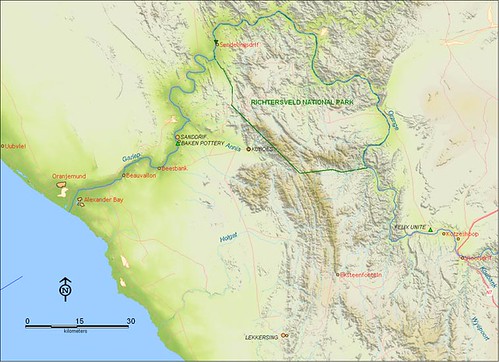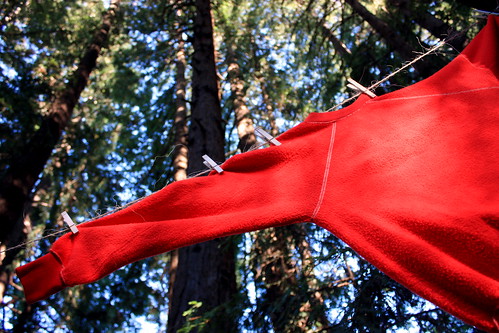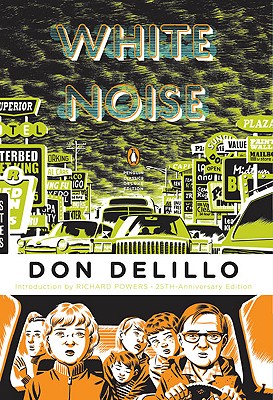 Once in a great while, you read a novel that transforms you so completely you are sure the change must be obvious to all who know you. Like a trauma survivor, you are astonished when life continues all around you, oblivious to what you have just been through, absorbed in its old trivialities. Given my obsessions—race and racial politics; the delicate balance of power between servants and even the most benevolent employers—it is hard to imagine a novel more guaranteed to affect me than Marlene van Niekerk’s masterpiece, Agaat (trans. Michiel Heyns, Tin House Books, 2010; published in the UK as The Way of The Women, Jonathan Ball, 2006). The novel opens during the last days of apartheid and tells the story of an Afrikaner woman and the black servant who has worked for her for most of both their lives. But Agaat is a stunning feat for reasons that have nothing to do with my own particular background: structural intricacy, stylistic range, the daring and devastating allegory that underlies the narrative without overwhelming it. It may be unfashionable and imprudent to make such declarations in a review, but Agaat is, without a doubt, one of the five finest novels I have ever read, and one I will return to repeatedly, knowing that I will find new marvels within its pages on each reading.
Once in a great while, you read a novel that transforms you so completely you are sure the change must be obvious to all who know you. Like a trauma survivor, you are astonished when life continues all around you, oblivious to what you have just been through, absorbed in its old trivialities. Given my obsessions—race and racial politics; the delicate balance of power between servants and even the most benevolent employers—it is hard to imagine a novel more guaranteed to affect me than Marlene van Niekerk’s masterpiece, Agaat (trans. Michiel Heyns, Tin House Books, 2010; published in the UK as The Way of The Women, Jonathan Ball, 2006). The novel opens during the last days of apartheid and tells the story of an Afrikaner woman and the black servant who has worked for her for most of both their lives. But Agaat is a stunning feat for reasons that have nothing to do with my own particular background: structural intricacy, stylistic range, the daring and devastating allegory that underlies the narrative without overwhelming it. It may be unfashionable and imprudent to make such declarations in a review, but Agaat is, without a doubt, one of the five finest novels I have ever read, and one I will return to repeatedly, knowing that I will find new marvels within its pages on each reading.
The allegorical aspect is unsurprisingly the first to grab the reader’s attention, and so audacious is it, that one can scarcely outline it without making it seem ridiculous. It seems unlikely that any serious novelist could pull this off, and yet van Niekerk does: Milla, the Afrikaner woman and the novel’s narrator, is paralyzed and dying of Lou Gehrig’s disease, so that, as the apartheid era draws to its close around them, she must depend on her servant, Agaat, for all her needs. Agaat—whose right arm and hand are deformed, but who is adroit and capable despite this handicap—must wipe Milla’s backside, scratch her itches, massage spoonfuls of porridge down her throat, and guess her whims: her dying wish, for example, to look at the maps of her her farm, Grootmoedersdrift. Milla thinks:
I want to see the distances recorded and certified between the main road and the foot-hills, from the stables to the old orchard, I want to hook my eye to the little blue vein with the red bracket that marks the crossing, the bridge over the drift, the little arrow where the water of the drift wells up, the branchings of the river.
She wants, in short, to take stock one last time, to take ownership even briefly, even symbolically.
But Agaat had put away the maps of Grootmoedersdrift, along with various other documents and decorations, when Milla became bedridden and the back room of the farmhouse had to be cleared out for her. And now Agaat can only play twenty questions in response to Milla’s desperate eye signals:
Shall I draw the curtain a bit? Do you want to listen to the morning service? A tape? Wine women and song? The pan for number one? The pan for number two? Too cold? Too hot? Sit up straighter? Lie down flatter? Eat a bit more porridge? Fruit pulp? There is cold melon? With a bit of salt? Water? Tea with honey and lemon?
Whether she cannot or will not guess what Milla really wants, we ourselves must wonder, adjusting our perceptions through the course of the novel as the mystery of Agaat unfolds before us. For of course Agaat is wiser, and crueler, and more powerful than we have guessed at first, and though she never speaks for herself in the novel—we hear her words and see her actions only through Milla—we cannot help but share Milla’s suspicion that Agaat revels in her complete control over Milla’s body. She is the perfect nurse, following the doctor’s orders to the letter, foisting the prescribed exercises upon Milla’s unresisting limbs, studying her urine with a magnifying glass, meticulously recording “the motions of my entrances and my exits.” Will she eventually bring the maps out for Milla? This is the question that drives the third of the novel that takes place in the 1990s, and it is yet another choice to which summary cannot do justice: it seems an unlikely source of momentum until you actually find yourself turning the pages with bated breath, wondering how long Agaat will hold out, in what other ways she will misunderstand (or pretend to misunderstand) Milla’s longing before she yields.
The twenty chapters of Agaat are structured identically: each opens with Milla at Agaat’s mercy on her deathbed in the 1990s, then goes on to an extended flashback in the second person, then a dense stream-of-consciousness prose poem, and finally a entry or a series of entries from Milla’s diaries. But where this structure might have seemed arbitrary or contrived in the hands of a lesser writer, here it emerges organically from the novel’s context: the diary entries, for example, are there because Agaat is reading Milla’s diaries aloud to her to keep her entertained, and what an act of both devotion and defiance this is: against Milla’s wishes, Agaat has kept the diaries, and now, at the end of Milla’s life—when Milla can no longer speak for herself to question or to defend those earlier versions of herself—she has brought them out to share. What she herself thinks of the events and opinions revealed in the diaries we must piece together bit by bit as we learn more about her own place and history in the household.
As for the flashbacks, it seems natural, even necessary, for Milla to reminisce on her life as a farmer, beginning in 1946 when she becomes engaged to Jak de Wet and encompassing all the challenges and sorrows she endured in order to make a living off the land. After all, she has nothing but her mind, her memories. These flashbacks hint at the entire history of South Africa while gradually revealing the knotty secrets of Milla and Jak’s marriage and raising questions about Agaat’s complex role in the household: somewhere between friend and servant to Milla, despised and distrusted “woolly” to her embittered husband Jak, second mother to their son Jakkie. And while one might well expect to learn a great deal about farming—the symptoms of and treatments for botulism in cattle, the causes of pig measles, how to dose a poisoned bull—in these sections, there is also much unexpected beauty in the language and the imagery.
 Van Niekerk has written two critically acclaimed novels so far, but she was first a poet, and in the prose poems that trace the progression of Milla’s illness from the initial appearance of symptoms to the moments before her death, she gives her poetic impulse free reign. The results are breathtaking, and not just because it is rare to encounter such prodigious gifts in a work of fiction:
Van Niekerk has written two critically acclaimed novels so far, but she was first a poet, and in the prose poems that trace the progression of Milla’s illness from the initial appearance of symptoms to the moments before her death, she gives her poetic impulse free reign. The results are breathtaking, and not just because it is rare to encounter such prodigious gifts in a work of fiction:
…i clamp myself gather my waters my water-retaining clods my loam my shale i am fallow field but not decided by me who will gently plow me on contour plough in my stubbles and my devils’s thorn fertilise me with green manure and with straw to stiffen the wilt that this wilderness has brought on this bosom and brain? who blow into my nostrils with with breath of dark humus? who sow in me the strains of wheat named for daybreak or for hope? how will my belated harvest reflect and in what water? who will harvest who shear who share my fell my fleece my sheaf my small white pips? who will chew me until I bind for i have done as was done unto me the sickness belongs to us two.
What saves the novel from being an incoherent showcase of the author’s skills are the many brilliant resonances between the different sections: the subtle glint in one of the prose poems of an image we will later encounter in a flashback section, the spinning out in a diary entry of an event alluded to in a flashback, a small detail in a deathbed scene picked up in a flashback and turned into an answer to a question we didn’t know we had.
A concrete example to illustrate these abstractions: in a series of diary entries from 1960, we see Milla supervise Agaat’s first sheep-butchering lesson. Agaat is at the time twelve or thirteen, and it’s clear to us that some unspoken emotion simmers beneath her surface: perhaps disgust, perhaps just the fluctuating resentments of a girl that age. In the process of butchering the sheep, Agaat bloodies her dragging right sleeve. (Her clothes are all made with a longer right sleeve to conceal, by her own choice, the deformed arm.) When the butchering is over, Milla tells Agaat to wash up and orders another servant: “…go and fetch my old red jersey in the bedroom she can’t walk around any longer in that blood-stained thing.” But Agaat refuses to put on Milla’s red jersey. Milla reports Agaat’s response in her diary: “I have another jersey like this one she says where’s my jersey I want my own jersey it has the right sleeve.”
It is just another domestic detail in a long record of domestic details: Milla’s diaries abound with lists, plans, projects undertaken and unfinished. Easy enough to overlook or forget the red jersey, or to accept Agaat’s explanation for her refusal, for it is true that Milla’s red jersey does not have one longer sleeve. But the moment stuck, for some reason, in my mind—and sure enough, hundreds of pages later, the red jersey appears again, and the mystery of Agaat’s reluctance is solved for us, as are dozens of other little mysteries planted here and there (the silver bell Agaat brings Milla in her sickbed even though Milla is incapable of ringing it to summon her; the letterbox-style flap in the door of Agaat’s erstwhile bedroom) including many I am sure I overlooked on this first reading.
 Any attentive reader will notice that the novel’s ingenious plotting relies on its architecture, its maze of secret passages and hidden entrances. (Though, at almost 600 pages, perhaps it is best compared to a doll’s house the size of a cathedral.) But as a writer—and one with a special interest in retrograde narration—I was floored by what van Niekerk does with these diary entries. The first ones we see are from 1960, and from there they continue chronologically until 1979, when Milla abandons her diary-keeping because her son is grown up and has left home to join the army; apparently she feels on some level that her primary domestic role has come to an end, and with it, the need to keep a record of it. Here—more than halfway through the book—Agaat begins to read out the packet of diaries that she has saved for last, but that in fact record the earliest events, beginning with her own arrival in the household in 1953 and her early relationship with Milla.
Any attentive reader will notice that the novel’s ingenious plotting relies on its architecture, its maze of secret passages and hidden entrances. (Though, at almost 600 pages, perhaps it is best compared to a doll’s house the size of a cathedral.) But as a writer—and one with a special interest in retrograde narration—I was floored by what van Niekerk does with these diary entries. The first ones we see are from 1960, and from there they continue chronologically until 1979, when Milla abandons her diary-keeping because her son is grown up and has left home to join the army; apparently she feels on some level that her primary domestic role has come to an end, and with it, the need to keep a record of it. Here—more than halfway through the book—Agaat begins to read out the packet of diaries that she has saved for last, but that in fact record the earliest events, beginning with her own arrival in the household in 1953 and her early relationship with Milla.
The purpose of telling a story backwards is of course that the reader already knows the ending, so that every event leading back from it is imbued with the weight of that ending: thus a glowing, hopeful beginning becomes a heartbreaking one if we already know that hope to be naïve or misplaced. This is abundantly true in Agaat; it is hard to imagine a more devastating ending than the beginning of Milla and Agaat’s journey together. But here this structure is not just an authorial imposition; it reveals Agaat’s own stake in the diary-reading, telling us that it is at least as painful for her to revisit the beginning of her life at Grootmoedersdrift as it is for Milla. When, at least, that beginning is laid out before us, it is not just the facts of it that take our breath away—although the final pieces of the puzzle we have been putting together for six hundred pages are immensely satisfying—but also our understanding of what it must mean for Agaat to read aloud the beginning and for Milla to hear it.
There are dissertations waiting to be written about Agaat, countless term papers on elements I will have to leave out in the interest of space here. Agaat’s white cap alone, that crowning symbol of her servanthood, deserves hours of analysis, as does the theme of embroidery in the novel, so effectively highlighted on the cover of the Tin House edition (the foreword to an Afrikaner embroidery handbook from the 1960s is, after all, one of the epigraphs to the novel).
But I cannot conclude this review without a word on the outstanding translation by Michiel Heyns. No, I don’t read Afrikaans, but one does not need to to recognise almost immediately that this translation is the work of a master. In his note, Heyns tells us: “Agaat is a highly allusive text, permeated, at times almost subliminally, with traces of Afrikaans cultural goods: songs, children’s rhymes, children’s games, hymns, idiomatic expressions, farming lore.” That he somehow manages to convey the spirit and the meaning of these allusions while preserving the foreign reader’s sense of being a stranger in a strange land is his genius. 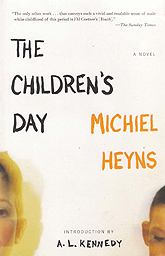 I could recognize the moments that would mean something different to a reader familiar with Afrikaner culture than they did to me, but what I felt was not exclusion, or frustration, or even resignation; Heyns’s windows into this text are made of glass. You put your fingers to them, feel that dry South African heat, and know that you are invited to look for as long you need to, to ponder and to make your own meaning. I now look forward to reading not only everything van Niekerk has written, but Heyns’s own work too, to experience more directly the powerful intelligence and sensitivity behind the English edition of Agaat. But first I must give my heart time to mend. I may have cried myself to sleep the night I finished Agaat, but I’m convinced I woke up already better and stronger. The best novels shatter your heart, but, to paraphrase Toni Morrison, they also gather up the pieces of you and give them back to you in all the right order.
I could recognize the moments that would mean something different to a reader familiar with Afrikaner culture than they did to me, but what I felt was not exclusion, or frustration, or even resignation; Heyns’s windows into this text are made of glass. You put your fingers to them, feel that dry South African heat, and know that you are invited to look for as long you need to, to ponder and to make your own meaning. I now look forward to reading not only everything van Niekerk has written, but Heyns’s own work too, to experience more directly the powerful intelligence and sensitivity behind the English edition of Agaat. But first I must give my heart time to mend. I may have cried myself to sleep the night I finished Agaat, but I’m convinced I woke up already better and stronger. The best novels shatter your heart, but, to paraphrase Toni Morrison, they also gather up the pieces of you and give them back to you in all the right order.
Further Links and Resources
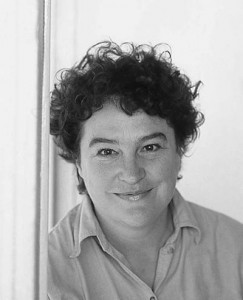
Marlene van Niekerk

